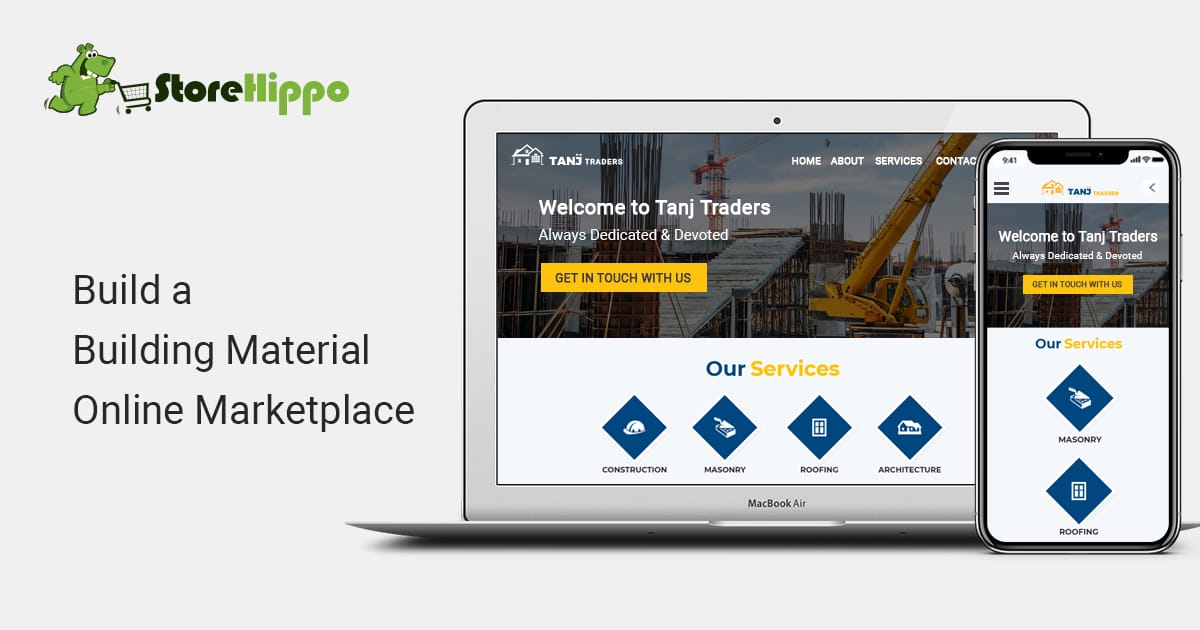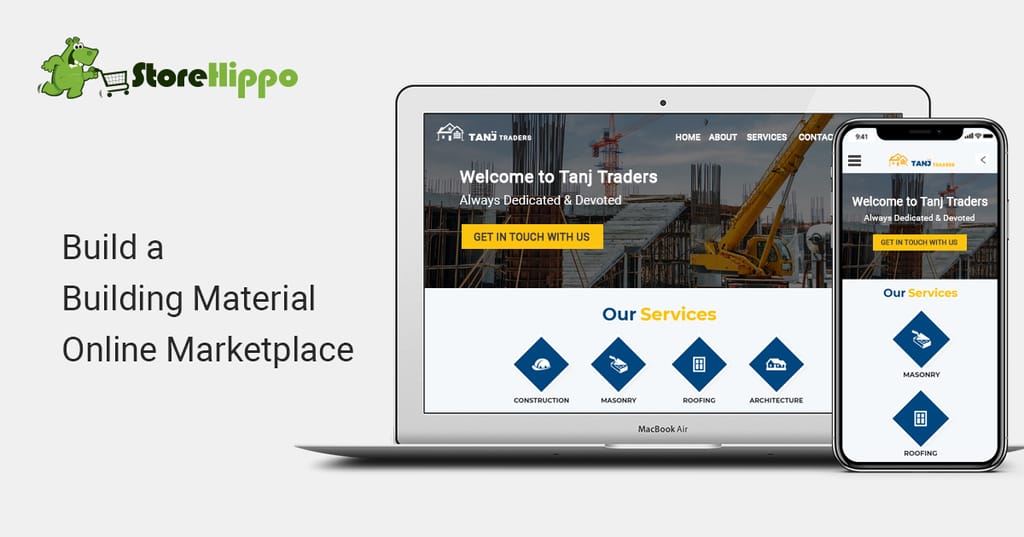Are you already an experienced player for selling construction and building material, the brick-and-mortar way? Does the idea of a multi-vendor marketplace to sell your products online seem inviting?
Well, we must say, it’s worth it! A multi-seller business could be an alternative, easier and faster way to sell all kinds of genuine construction material in one place at a standardised rate.
Table of Contents
Stay Ahead With Your Online Marketplace
Companies like Supplified.com and Infra.Market unlocked the great potential of selling building materials online. Today, a lot of entrepreneurs are following their footsteps by selling materials such as cement, bricks, TMT bars and more.
The entire market of construction material is unorganised and scattered with a non-regulated pricing structure. In such a scenario, every company or individual wants to find the best quality at a good price.
Hence, your multi-seller store could be an ideal platform to help sellers quote a fair price and follow ethical business practices. At the same time, it can help buyers procure quality products without any compromise.
So what is the starting point? How to start a Multi-vendor marketplace to sell building material online? Let’s try and figure out!
1. Choose a vendor module
Generally, multi-seller business models have different kinds of vendor modules. For selling building materials, you can be selective and sell only one particular product.
Like for instance, you can focus on creating a niche for selling only cement or concrete and invite quality vendors for this category only. In this case, any company or contractor wanting to purchase these products can look up to your store as an ideal point of purchase.
Another option is to expand the product category and sell a wide range of construction items including vendors selling tiles, bricks and even paints!
Deciding whether you want to have a vertical or horizontal vendor module will help you gain clarity on different aspects such as website design, marketing strategy, etc.
StoreHippo ecommerce platform helps you create your multi-vendor marketplace like a pro! You can choose between different vendor modules and create your desired B2B store quickly.
2. Create a functional design
Your website’s design can have a huge influence on the user experience and whether or not consumers choose to buy from you.
A clear, concise and uncluttered design can help your buyers find relevant products easily and they can sail through the purchase process effortlessly.
With a huge number of vendor listings, multiple storefronts and product verticals, you might be tempted to cram several products or too much content into a single page.
However, the practice of keeping ‘white space’ between different elements on your multi-vendor marketplace can make your information more digestible for the buyers.
If you want to attract customers to your store, you have to design it in a way that matches the needs and wants of your buyer. StoreHippo brings to you its rich theme library with hundreds of different designs. The DIY tools can help you create all the pages by dragging and dropping the widgets and you can have your store ready in no time.
Once your design and website is ready and functional, all you need to do is invite vendors to list their products on your multi-vendor marketplace. StoreHippo provides a seller self-registration process which is simple and extremely straightforward. What next? Well, wait for your first sale!
3. Facilitate vendor processes
In a multi-seller business model, your sellers are as important as your customers. Facilitating them with auto tools to manage their processes will provide them freedom to take control of their business.
But how can you manage all the vendors at one go?
Say for instance, your store has different sellers listed to supply cement. In that case, providing these sellers individual dashboards, seperate inventories and seller pages can help them to take charge of their respective sales.
StoreHippo is equipped with amazing functionalities to help you facilitate your vendors in such a way that you can still have complete control as the owner. Its functionalities include;
- Admin panel and approval flow for vendor products
- Individual vendor dashboards and inventories
- Separate seller ledgers
- Organised order management system
- Adaptive payment to split vendor payment and admin commission
With such advanced features, you can ensure that there is complete transparency in your multi-vendor marketplace. You can follow ethical business practices at every step - from onboarding to sale.
4. Enable efficient mobile shopping
Research indicates that 81 percent of the time, B2B consumers do not entirely depend on the builder or contractor for raw material. In cases, where people are building their private properties, they want to personally take on the task of closely monitoring the procurement of goods.
How do you think most of these customers will search for you on the web? From major construction equipment to raw materials like cement, consumers browse everything on their smartphones. Contractors, builders and people related to this industry might also be using an app for easy access to products.
The StoreHippo platform is built using mobile-first technology. It helps to fit your website across any screen size and gives your business a forward thrust as far as organic searches are concerned.
Moreover, you can also avail of Progressive Web Apps for a native-app experience and further enhance your users’ browsing experience. StoreHippo also offers Android and iOS apps without any additional coding or cost.
5. Expand your reach
Besides giving you adequate branding and helping you make data-driven decisions, a multi-vendor marketplace also helps you reach out to your customers wherever they are located. But just reaching out might not solve the purpose.
You might want people across various geographical locations to understand what you are selling and the value behind your product. For this, you need to communicate in a way that makes them comfortable, i.e. in their native language.
At the same time, it is also important to enable your customers to pay in their currency. Say, one of the companies in Africa wants to buy cement from your multi-vendor marketplace and if you allow it to pay directly in Zar wouldn't it be convenient for them?
StoreHippo solution helps you provide your users with a more personalised experience by;
- Engagement in the native language
- Payment options in different currencies
It’s multi-lingual and multi-currency feature ensures that you can tap into the international market easily.
6. Devise relevant marketing strategies
The marketing needs of a B2B business is very different from a retail one. For wholesale business, you need to ensure that purchases happen in bulk. Only then as the owner of the multi-vendor marketplace, you and your vendors are in a position to make a profit.
For a B2B website, you can use these two very efficient marketing strategies to boost sales;
Bulk price discounts: Offering bulk price discounts is a win-win situation for your vendors as well as sellers. On the one hand, it encourages customers to buy more and on the other hand increases higher order value.
Minimum order quantities: Similarly, setting up minimum order quantities on all or part of your products is crucial for making profits and maintaining margins. You can also offer shipping benefits like free shipping on MOQ for your multi-vendor marketplace.
Keeping in mind the need for B2B sales tactics, StoreHippo offers bulk pricing discounts and allows minimum order quantities. You can also leverage its other tools like custom pricing and quotes, time-specific marketing, etc.
7. Building shipping support
Shipping is an important aspect of your multi-vendor marketplace. Since you are expected to deliver huge quantities of products, it is crucial to rely on experienced shipping partners and offer customers options such as real-time tracking of deliveries.
Say for example, a big real-estate company has ordered tons of cement from a few of your vendors. However, they want these to be delivered in specific time intervals and not everything at one go. In this case, if you have an auto facility like split delivery of orders, it can only help your customer.
StoreHippo helps your store integrate with its shipping aggregator platform ShipKaro. Here you can get connected with different carriers and get bargained rates to ship your material. You can also get assisted with autonomous tools like scheduled pick-ups, bulk-uploads and real-time tracking for a seamless logistics chain.
Conclusion
As a smart business owner, you might never want a web solution to turn into a big-time liability. For this reading or researching about the probable market options is just not enough!
StoreHippo’s up-to-date features can help you create a multi-vendor marketplace that is a win-win for you, your vendors and the companies who buy from you.
What’s even better? You can check out what we claim with a 14-day free trial and experience what our platform has to offer. Drop us a line below and get in touch with the StoreHippo team to create your dream business model!





















Leave A Comment